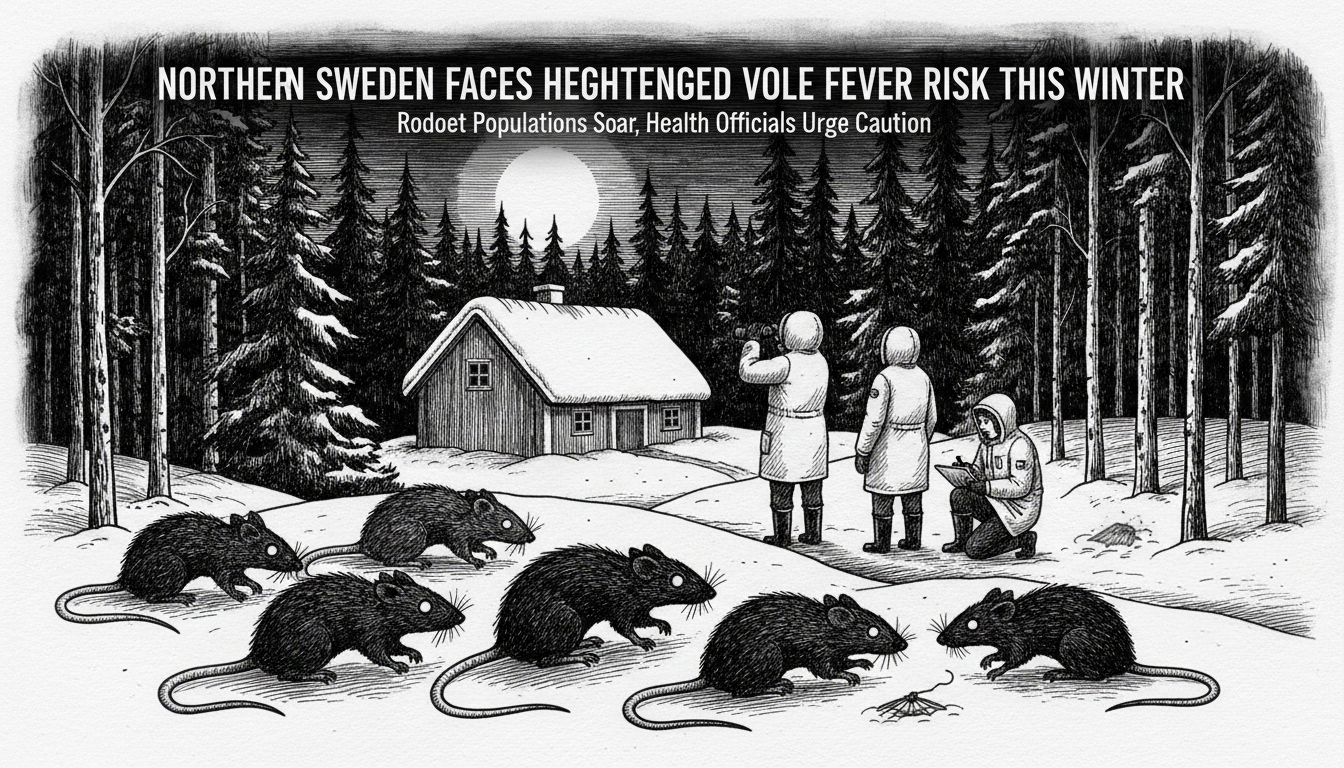Residents across northern Sweden are preparing for what could become a significant vole fever outbreak this winter. Wildlife researchers report rodent populations matching levels seen during previous record outbreak years, raising concerns about potential public health impacts.
Field surveys conducted by university researchers show forest vole numbers have reached concerning densities. The current population mirrors the 2006-2007 outbreak period when thousands fell ill across the country. Researchers emphasize that high vole numbers create the foundation for widespread transmission.
Frauke Ecke, a landscape ecology researcher, explained the situation in a statement. "Abundant voles create the precondition for many people to become sick. Weather patterns also play a crucial role. Heavy November rainfall combined with high vole numbers creates the perfect storm for disease spread."
The infection season typically intensifies after the New Year, though health officials have already identified initial cases. There's typically a several-week delay between rodent population growth and human illness, prompting early warnings to northern communities.
Health authorities recall that 2018 marked Sweden's last major vole fever outbreak. During that period, over 2,000 people contracted the illness, with nearly 90 percent of cases concentrated in the four northernmost counties. The current conditions suggest similar patterns could emerge this winter.
Therese Thunberg, an infectious disease physician with Västerbotten region, confirmed the concerning outlook. "This could become another vole fever year. There are many voles in the environment, which could lead to numerous cases."
Researchers are encouraging public participation through a unique citizen science approach. They've developed a mobile application called "Mouse in House" that allows residents to report rodent sightings. This crowd-sourced data helps improve risk assessment and outbreak forecasting.
Ecke emphasized the app's importance. "Public reports help us tremendously in our risk evaluation work. Most people become infected indoors, typically in houses, cabins, or storage sheds."
For northern Swedes living in affected areas, practical precautions can reduce infection risks. Experts advise avoiding dust creation in spaces where rodents might have been present. If homeowners notice droppings or signs of rodent activity, they should take extra cleaning precautions.
Ecke provided specific guidance for common scenarios. "If you see rodent droppings or traces of gnawing, then you need to be careful about dust. Otherwise, you can clean as usual. If a cat brings in a vole, don't handle it with bare hands. Use gloves or a plastic bag to avoid direct contact."
The situation highlights the delicate balance between wildlife populations and public health in Sweden's northern regions. As winter sets in, residents are watching both weather patterns and rodent activity, hoping to avoid repeating previous outbreak seasons. Health officials continue monitoring the situation closely, ready to adjust recommendations as the season progresses.
This developing situation demonstrates how environmental factors directly impact community health in rural Scandinavia. The connection between rodent cycles and human illness remains a ongoing concern for northern regions, where wilderness and settlement often intersect.

